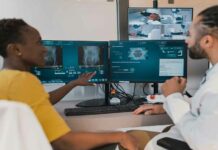Spinal injuries are among the most devastating health issues, affecting mobility, sensation, and overall quality of life. Innovations in surgical techniques offer new hope for those afflicted by such conditions.
Whether you are dealing with spinal injuries in Ireland or elsewhere, understanding the latest advancements can provide both reassurance and insight into possible treatment paths. This article delves into the array of surgical techniques transforming spinal injury treatment today.
Understanding Spinal Injuries
A spinal injury can range from minor fractures to severe damage, often leading to permanent paralysis. The primary objective of spinal surgery is to stabilise the spine, alleviate pain, and improve neurological recovery. Recent advancements have significantly improved outcomes, reducing recovery times and enhancing the quality of life for patients.
Traditional vs. Modern Surgical Techniques for Spinal Injury
Historically, spinal surgeries were invasive, requiring extensive recovery periods. Traditional methods often involved large incisions, which posed risks of infection and prolonged hospital stays.
In contrast, modern techniques focus on minimally invasive procedures, offering numerous benefits, including:
- Reduced risk of infection
- Shorter hospital stays
- Faster recovery times
- Minimal scarring
These improvements are made possible by advancements in medical technology and a better understanding of spinal anatomy.
Key Techniques in Modern Spinal Surgery
Innovative surgical techniques are transforming the landscape of spinal injury treatment. By embracing advancements such as minimally invasive procedures, robotic-assisted surgery, and regenerative medicine, there is a growing potential for improved patient outcomes.
It is crucial to understand that each technique comes with its own set of benefits and limitations, which we’ll explore a little more here:
Minimally Invasive Spine Surgery (MISS)
Minimally Invasive Spine Surgery (MISS) has revolutionised the field. By using smaller incisions, surgeons can access the damaged area with minimal disruption to surrounding tissues. This technique is particularly effective for conditions such as spinal stenosis, herniated discs, and degenerative disc disease.
Robotic-Assisted Spine Surgery
Robotic-assisted surgery is another groundbreaking technique. This method utilises robotic arms controlled by the surgeon, enhancing precision and reducing the likelihood of human error. The benefits of robotic-assisted surgery include:
- Enhanced accuracy
- Reduced operative time
- Lower complication rates
Regenerative Medicine and Stem Cell Therapy
Regenerative medicine offers promising avenues for spinal injury treatment. Stem cell therapy, for instance, aims to repair damaged spinal tissues by regenerating cells. According to a recent study, stem cell treatments have shown significant potential in improving motor functions and reducing pain in patients with spinal injuries.
Emerging Techniques and Future Directions for Spinal Injuries
The field of spinal surgery continues to evolve, with several emerging techniques showing promise for the future. These advancements are not only aimed at improving surgical outcomes but also at enhancing the overall patient experience. Some include:
3D Printing Technology
3D printing technology is increasingly being used to create custom spinal implants tailored to the patient’s anatomy. This personalised approach can improve the fit and function of the implant, leading to better outcomes. For example, 3D-printed vertebrae can replace damaged sections of the spine, providing a more natural and stable support structure.
Intraoperative Neuromonitoring (IONM)
Intraoperative Neuromonitoring (IONM) involves real-time monitoring of neural pathways during surgery. This technique helps surgeons avoid accidental damage to nerves, thereby reducing the risk of postoperative complications such as paralysis or loss of function. According to a recent publication on PubMed, IONM has significantly improved surgical safety and patient outcomes in complex spinal procedures.
Biologics and Biomaterials
Biologics and biomaterials are being integrated into spinal surgery to promote healing and regeneration. Materials such as bioactive glass and peptide-based scaffolds are used to support bone growth and facilitate the repair of damaged tissues. These innovations not only enhance the body’s natural healing process but also reduce the need for additional surgeries.
Patient Considerations and Risks with Technological Innovations
While these advanced techniques offer promising results, it is essential to consider patient-specific factors when choosing the appropriate surgical method. Factors such as age, overall health, and the severity of the spinal injury can influence the choice of treatment.
A thorough preoperative assessment is crucial to determine the most suitable surgical approach. This assessment includes diagnostic imaging, neurological examinations, and a review of the patient’s medical history. By carefully evaluating these factors, surgeons can develop a personalised treatment plan that minimises risks and maximises benefits.
Postoperative care is equally important in ensuring successful recovery. Rehabilitation programmes, including physiotherapy and occupational therapy, are tailored to help patients regain strength and mobility. Regular follow-up visits with the healthcare team can also help monitor progress and address any complications early on.
Technology is Transforming Spinal Injury Care
In summary, the landscape of spinal injury treatment is undergoing a remarkable transformation due to innovative surgical techniques. Whether it is through minimally invasive procedures, robotic-assisted surgery, or emerging technologies like 3D printing and biologics, these advancements are providing new avenues for recovery and improved quality of life.
It is essential for patients to work closely with their healthcare providers to understand the options available and choose the best course of action for their unique circumstances. By staying informed and proactive, you can take the necessary steps towards a healthier, more mobile future.
















